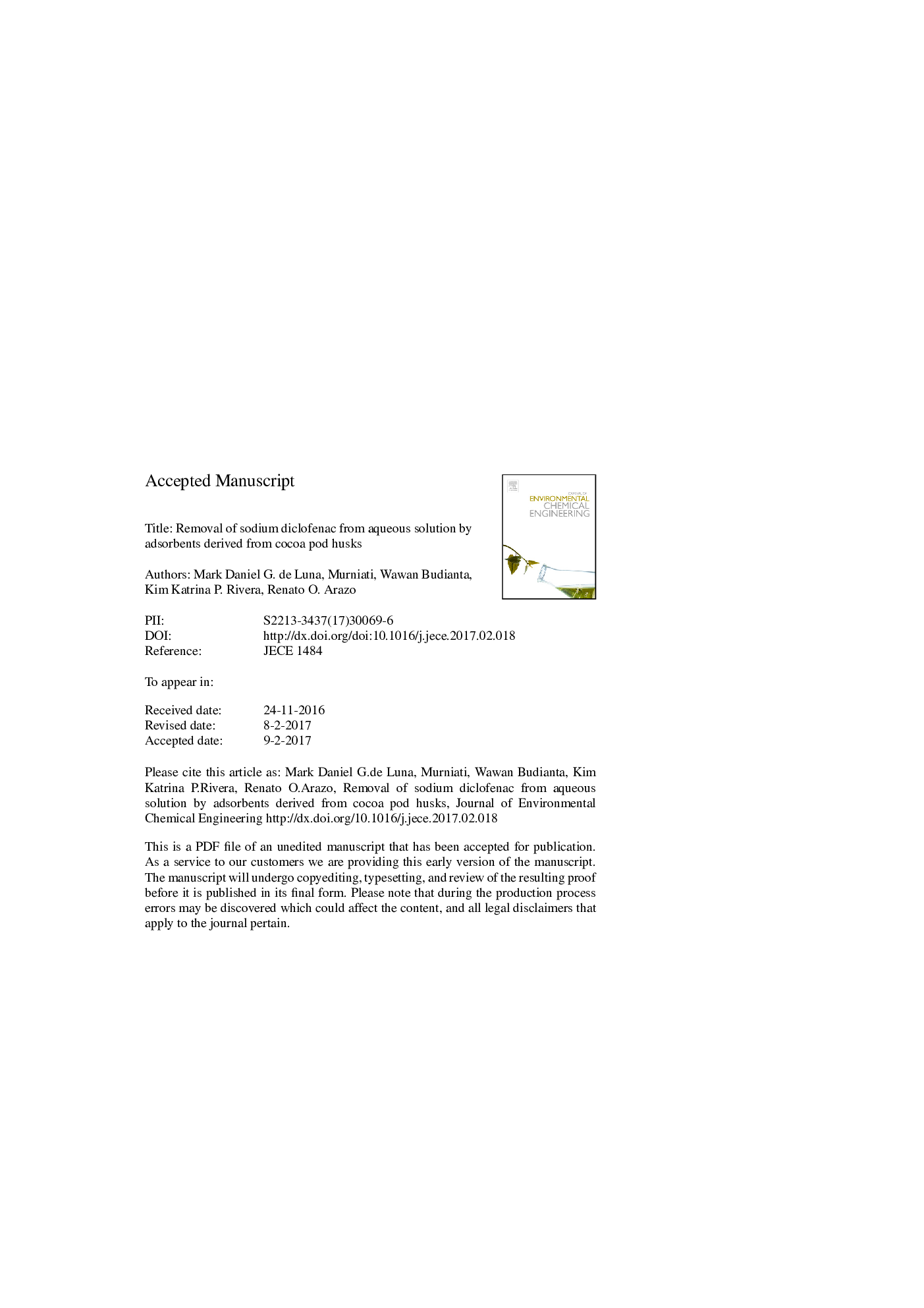| کد مقاله | کد نشریه | سال انتشار | مقاله انگلیسی | نسخه تمام متن |
|---|---|---|---|---|
| 4908485 | 1362580 | 2017 | 28 صفحه PDF | دانلود رایگان |
عنوان انگلیسی مقاله ISI
Removal of sodium diclofenac from aqueous solution by adsorbents derived from cocoa pod husks
ترجمه فارسی عنوان
حذف دیکلوفناک سدیم از محلول آبی توسط جاذب های حاصل از پوسته کاکائو
دانلود مقاله + سفارش ترجمه
دانلود مقاله ISI انگلیسی
رایگان برای ایرانیان
کلمات کلیدی
جذب، کربن فعال، پوسته کاکائو پوسته، ایزوترم سینتیک، دی کولفناک سدیم،
موضوعات مرتبط
مهندسی و علوم پایه
مهندسی شیمی
مهندسی شیمی (عمومی)
چکیده انگلیسی
The presence of sodium diclofenac (SD) in wastewater effluent, surface water and even in drinking water has prompted worldwide concerns due to the harmful effects of this pollutant to terrestrial and aquatic organisms. This study investigated the potential of activated carbon from cocoa pod husk (CPHAC) as a low-cost adsorbent for the removal of SD from aqueous solution. Characteristics of the unmodified and the CPHAC were evaluated using SEM, EDX, and FTIR analyses. The effects of pH, initial SD concentration, CPHAC dosage, and contact time in removing SD via adsorption were investigated using central composite design (CCD) of the response surface methodology (RSM) from Design Expert 7.0 software. The SD removal efficiency was observed to increase from 76.0% to 93.6% at decreasing pH and CPHAC dosage and increasing initial concentration. The optimum conditions to maximize SD removal were at pH 7, 30 mg Lâ1 initial SD concentration, 0.25 g CPHAC dosage, and 15 min contact time. From batch experiments, the equilibrium time was achieved at 45 min. Kinetic studies showed that the adsorption followed pseudo-second order reaction (R2 = 0.99998) and the analysis of the equilibrium data revealed that SD adsorption using CPHAC best fitted the Freundlich isotherm (R2 = 0.99707, n value of 4.34) compared to the Langmuir and Temkin models. The study demonstrated that activated carbon from CPH efficiently removed the SD in aqueous solution with adsorption capacity of 5.53 mg gâ1 at equilibrium.
ناشر
Database: Elsevier - ScienceDirect (ساینس دایرکت)
Journal: Journal of Environmental Chemical Engineering - Volume 5, Issue 2, April 2017, Pages 1465-1474
Journal: Journal of Environmental Chemical Engineering - Volume 5, Issue 2, April 2017, Pages 1465-1474
نویسندگان
Mark Daniel G. de Luna, Murniati Murniati, Wawan Budianta, Kim Katrina P. Rivera, Renato O. Arazo,
